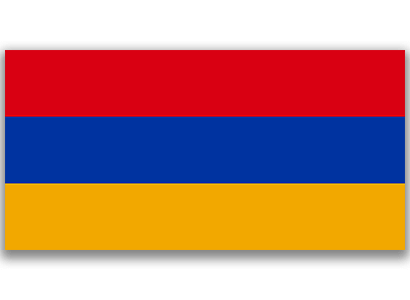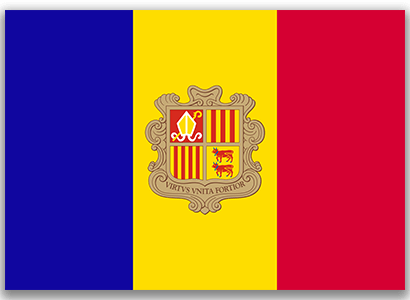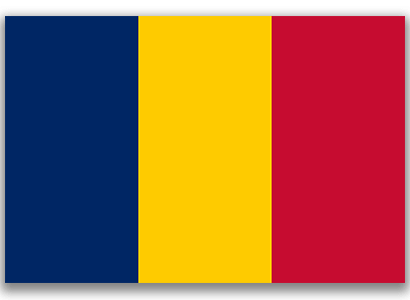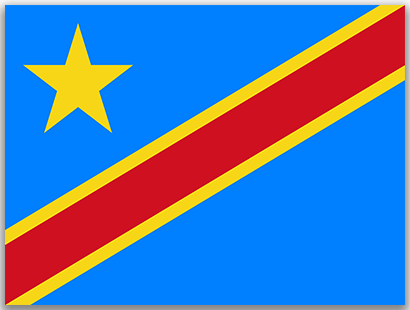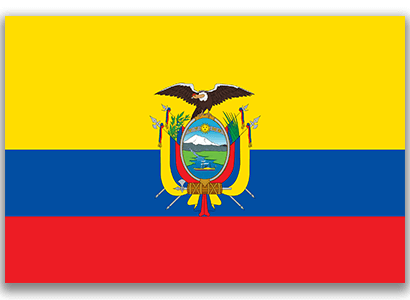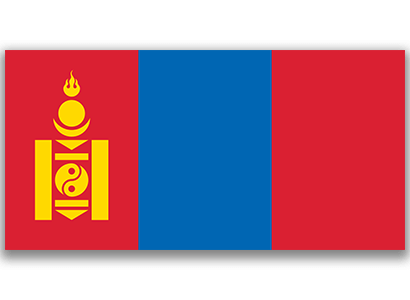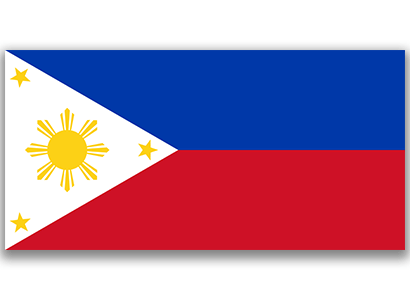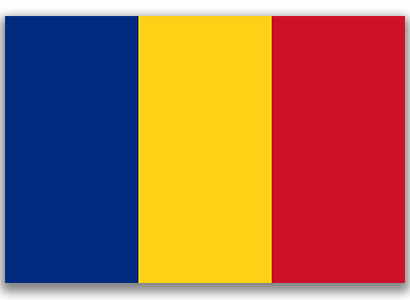Red Blue and Yellow Flags
Blue, red, and yellow are among the most commonly used colors in national flags worldwide. Blue is often used to represent loyalty, strength, and wisdom. Red is often used to represent courage, revolution, and sacrifice. Yellow is often used to represent wealth, wisdom, and generosity and sun. These three colors is particularly powerful and has been used in many national flags around the world.
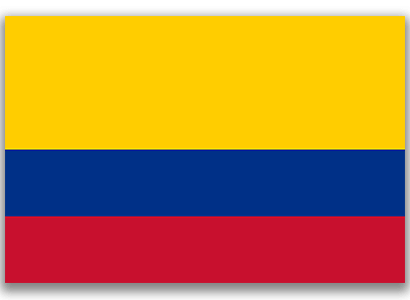
Blue Red and yellow flags of the world
1. Flag of Romania (Blue, Yellow and Red Flag)

The flag of Romania consists of three vertical stripes of equal size, colored blue, yellow, and red, from the hoist side to the fly side.
Blue: The blue stripe represents liberty and justice. It also symbolizes the sky and the Danube River, which runs through Romania.
Yellow: The yellow stripe represents wealth and prosperity. It is also said to represent the sun and the fields of wheat that are an important part of the country's agriculture.
Red: The red stripe represents the blood of those who fought for Romania's independence, as well as the courage and bravery of the Romanian people.
Together, these colors reflect the country's history, culture, and values. The current design of the flag was adopted in 1989, after the fall of the communist regime.
Blue: The blue stripe represents liberty and justice. It also symbolizes the sky and the Danube River, which runs through Romania.
Yellow: The yellow stripe represents wealth and prosperity. It is also said to represent the sun and the fields of wheat that are an important part of the country's agriculture.
Red: The red stripe represents the blood of those who fought for Romania's independence, as well as the courage and bravery of the Romanian people.
Together, these colors reflect the country's history, culture, and values. The current design of the flag was adopted in 1989, after the fall of the communist regime.
2. Flag of Colombia (Yellow, Blue and Red Flag)
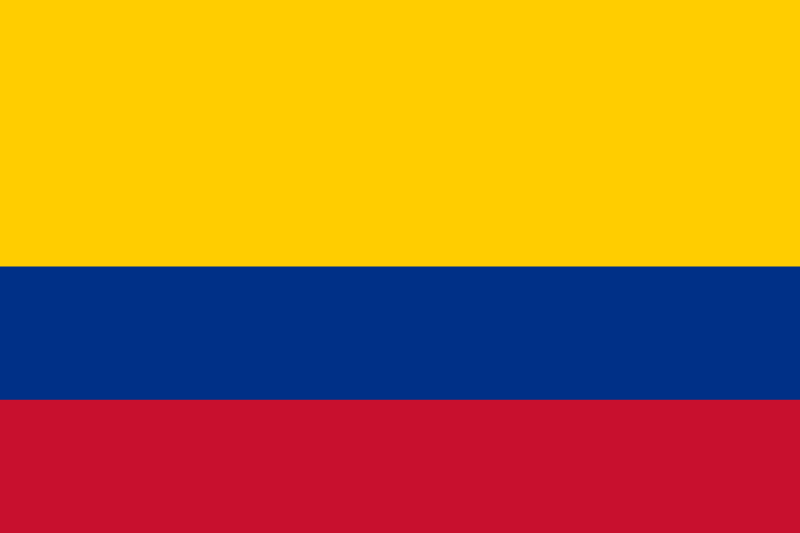
The flag of Colombia is composed of three horizontal stripes of yellow, blue, and red. The yellow stripe takes up a half of the flag and the blue and red take up a quarter of the space each.
Yellow: The yellow stripe represents the country's wealth, specifically its gold reserves, and the sun.
Blue: The blue stripe represents the seas that border Colombia and the sky.
Red: The red stripe represents the bloodshed and sacrifices made by the people who fought for independence from Spain, as well as the courage and bravery of the people of Colombia.
The flag was designed by Francisco de Miranda, a Venezuelan revolutionary, who was inspired by the flags of France and the United States. The current design was adopted in 1861, after going through several modifications since Colombia gained independence from Spain in 1810.
Yellow: The yellow stripe represents the country's wealth, specifically its gold reserves, and the sun.
Blue: The blue stripe represents the seas that border Colombia and the sky.
Red: The red stripe represents the bloodshed and sacrifices made by the people who fought for independence from Spain, as well as the courage and bravery of the people of Colombia.
The flag was designed by Francisco de Miranda, a Venezuelan revolutionary, who was inspired by the flags of France and the United States. The current design was adopted in 1861, after going through several modifications since Colombia gained independence from Spain in 1810.
3. Flag of Philippines (Blue, Yellow, White and Red Flag)
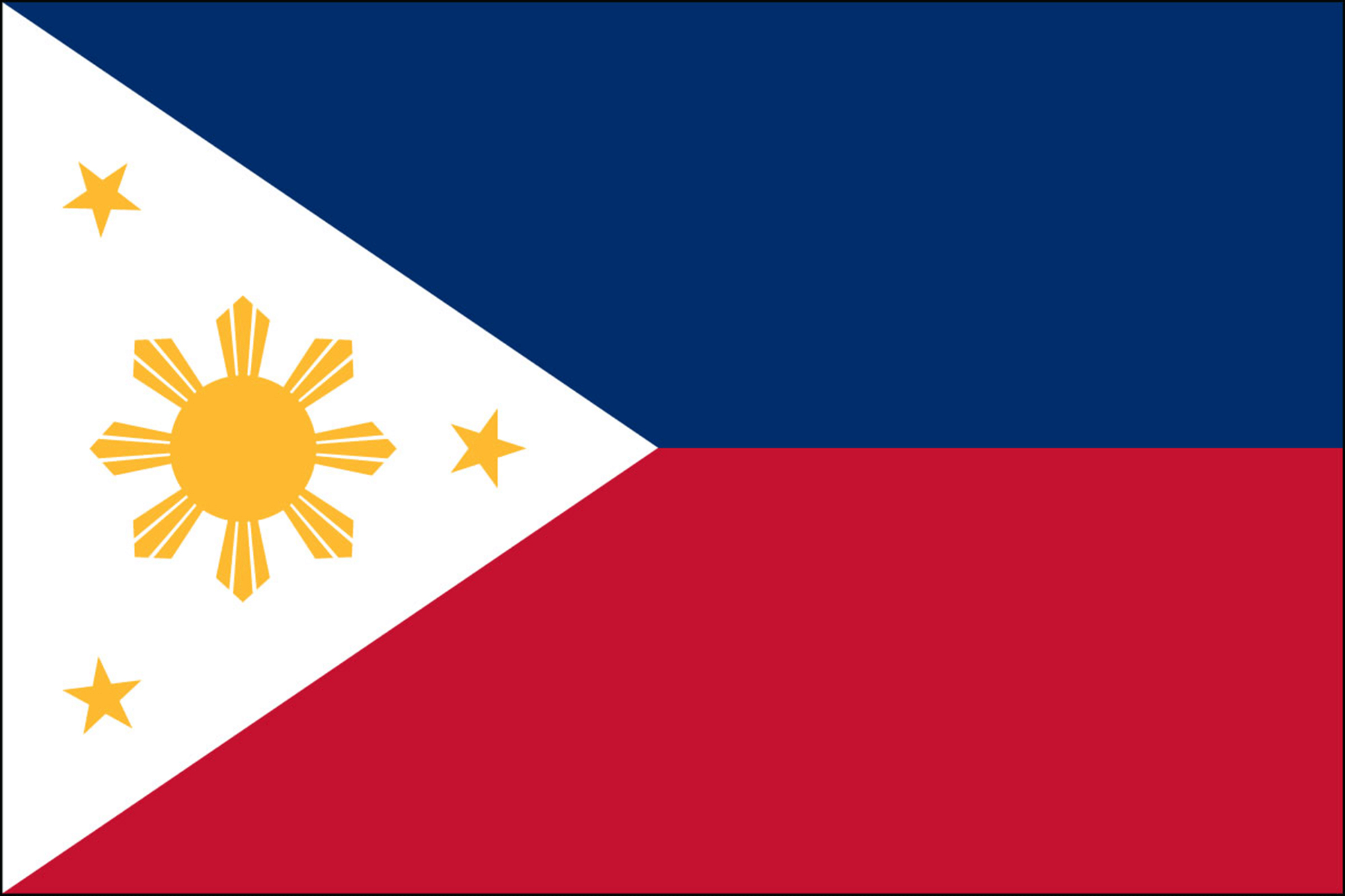
The flag of the Philippines is composed of a horizontal blue stripe at the top and a horizontal red stripe at the bottom, with a white equilateral triangle at the center. Inside the triangle, there is a yellow sun with eight rays, each representing one province that played a significant role in the country's fight for independence.
Blue: The blue stripe represents peace, truth, and justice.
Red: The red stripe represents patriotism, valor, and the bloodshed of Filipino heroes who fought for the country's independence.
Yellow : The yellow sun represents freedom, sovereignty, and the country's bright future. The eight rays of the sun represent the first eight provinces that took up arms against Spanish colonization and started the Philippine Revolution.
White : The white triangle represents purity, equality, and the country's aspirations for a just and peaceful society.
The flag was designed by Emilio Aguinaldo, the first president of the Philippines, and was first raised on June 12, 1898, when the country declared independence from Spain. The flag has gone through several modifications over the years, but the basic design and meaning have remained the same.
Blue: The blue stripe represents peace, truth, and justice.
Red: The red stripe represents patriotism, valor, and the bloodshed of Filipino heroes who fought for the country's independence.
Yellow : The yellow sun represents freedom, sovereignty, and the country's bright future. The eight rays of the sun represent the first eight provinces that took up arms against Spanish colonization and started the Philippine Revolution.
White : The white triangle represents purity, equality, and the country's aspirations for a just and peaceful society.
The flag was designed by Emilio Aguinaldo, the first president of the Philippines, and was first raised on June 12, 1898, when the country declared independence from Spain. The flag has gone through several modifications over the years, but the basic design and meaning have remained the same.
4. Flag of Chad (Blue, Yellow and Red Flag)
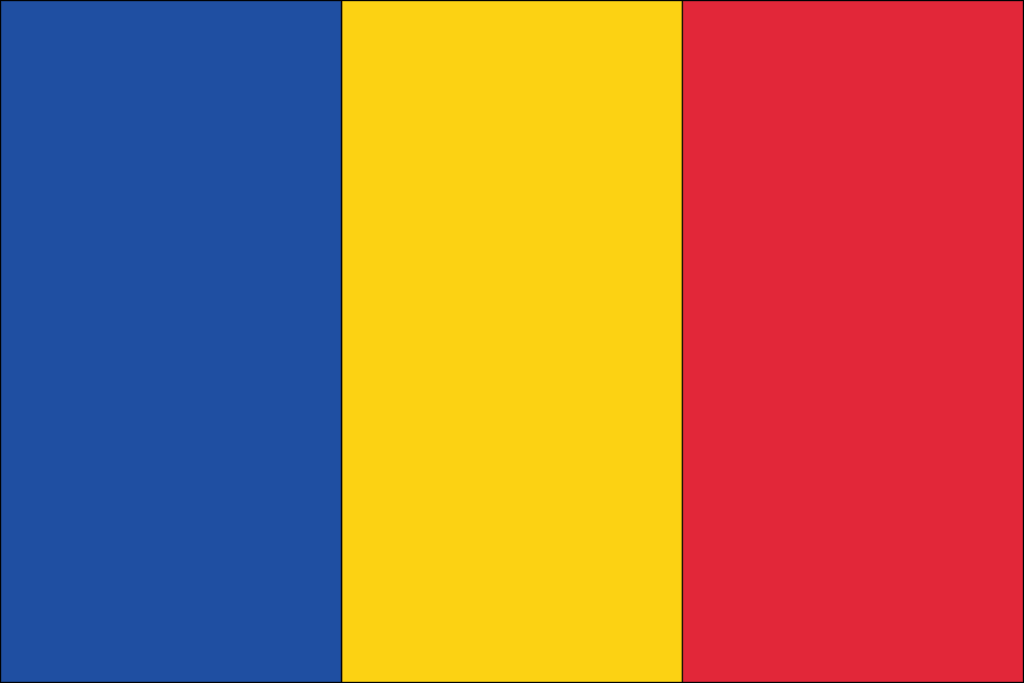
The flag of Chad consists of three vertical stripes of equal size, colored blue, gold, and red, from the hoist side to the fly side.
Blue: The blue stripe represents the sky and hope.
Yellow (gold): The gold stripe represents the sun and the desert in the northern part of Chad.
Red: The red stripe represents the blood of martyrs who fought for independence from France and the unity of Chad's four major ethnic groups.
Together, these colors reflect the history, geography, and values of Chad. The current design of the flag was adopted on November 6, 1959, shortly before Chad gained independence from France in 1960.
Blue: The blue stripe represents the sky and hope.
Yellow (gold): The gold stripe represents the sun and the desert in the northern part of Chad.
Red: The red stripe represents the blood of martyrs who fought for independence from France and the unity of Chad's four major ethnic groups.
Together, these colors reflect the history, geography, and values of Chad. The current design of the flag was adopted on November 6, 1959, shortly before Chad gained independence from France in 1960.
5. Flag of Armenia (Red, Blue and Yellow Flag)
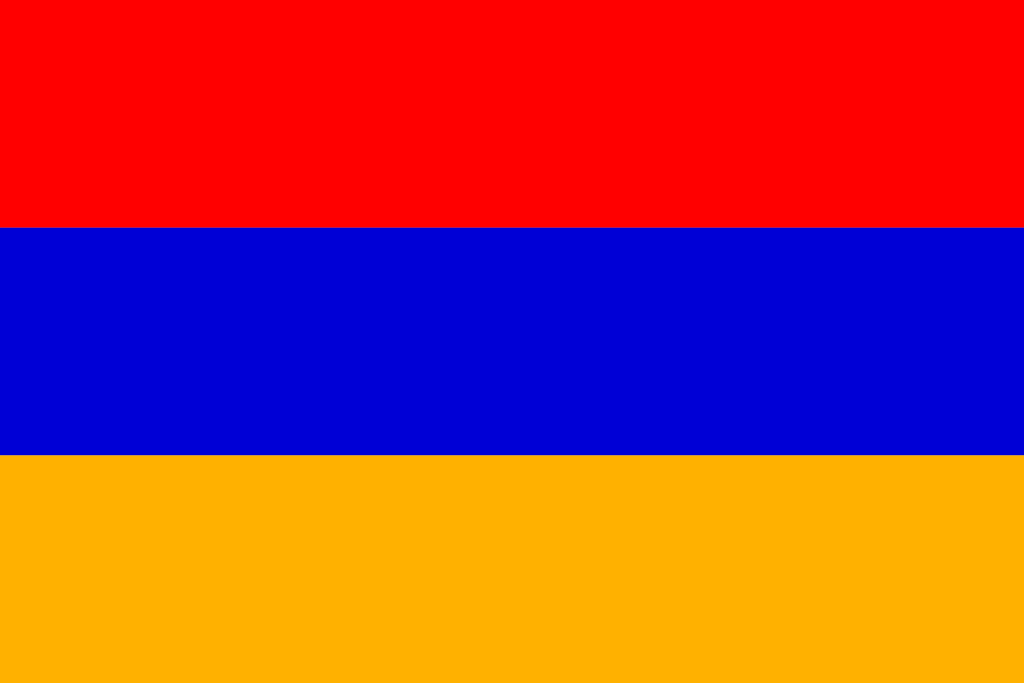
Officially adopted on August 24, 1990, the flag of Armenia has three horizontal bands of red, blue, and yellow color respectively.
Red: The color red symbolizes the blood shed by Armenians throughout their history, particularly during the Armenian Genocide of 1915. It also represents the national struggle for independence and freedom.
Blue: The color blue represents the sky and the hope for a better future for the Armenian people.
Yellow (gold): The color gold symbolizes the cultural and intellectual wealth of the Armenian people.
The flag of Armenia is a powerful symbol of the country's rich cultural and historical heritage, as well as its aspirations for a bright future.
Red: The color red symbolizes the blood shed by Armenians throughout their history, particularly during the Armenian Genocide of 1915. It also represents the national struggle for independence and freedom.
Blue: The color blue represents the sky and the hope for a better future for the Armenian people.
Yellow (gold): The color gold symbolizes the cultural and intellectual wealth of the Armenian people.
The flag of Armenia is a powerful symbol of the country's rich cultural and historical heritage, as well as its aspirations for a bright future.
6. Flag of Congo, DR (Blue, Yellow and Red Flag)
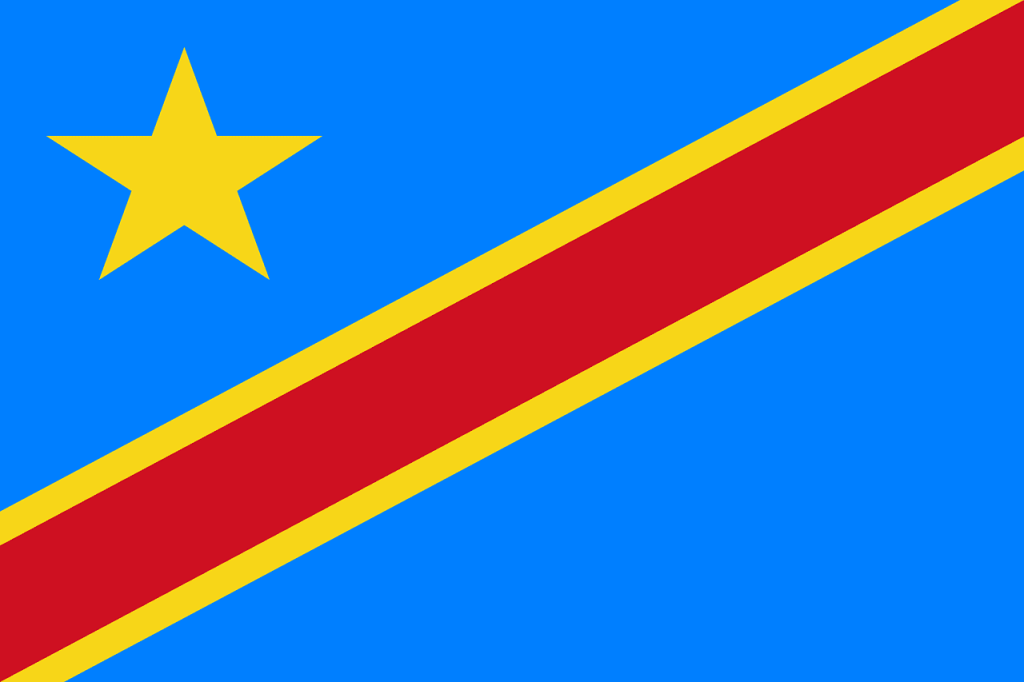
The flag of the Democratic Republic of Congo, also known as Congo-Kinshasa, is a sky blue flag, adorned with a yellow five-pointed star in the upper left canton and cut diagonally by a red stripe with a yellow fimbriation.
Blue: The blue field represents peace, stability, and hope for a better future.
Yellow: The yellow stripes represent the country's wealth and bright future.
Red: The red diagonal stripe represents the blood of the country's martyrs who fought for independence from colonial rule.
Star: The five-pointed star in the flag's upper hoist-side corner represents the country's unity, hope, and aspirations for a better future.
The current flag was adopted on 20 February 2006. The flag of the Democratic Republic of Congo represents the country's struggle for independence and its aspirations for peace, stability, and prosperity. The blue, red, and yellow colors and the star are all important symbols of the country's cultural and historical heritage.
Blue: The blue field represents peace, stability, and hope for a better future.
Yellow: The yellow stripes represent the country's wealth and bright future.
Red: The red diagonal stripe represents the blood of the country's martyrs who fought for independence from colonial rule.
Star: The five-pointed star in the flag's upper hoist-side corner represents the country's unity, hope, and aspirations for a better future.
The current flag was adopted on 20 February 2006. The flag of the Democratic Republic of Congo represents the country's struggle for independence and its aspirations for peace, stability, and prosperity. The blue, red, and yellow colors and the star are all important symbols of the country's cultural and historical heritage.
7. Flag of Ecuador (Yellow, Blue and Red Flag with Emblem)
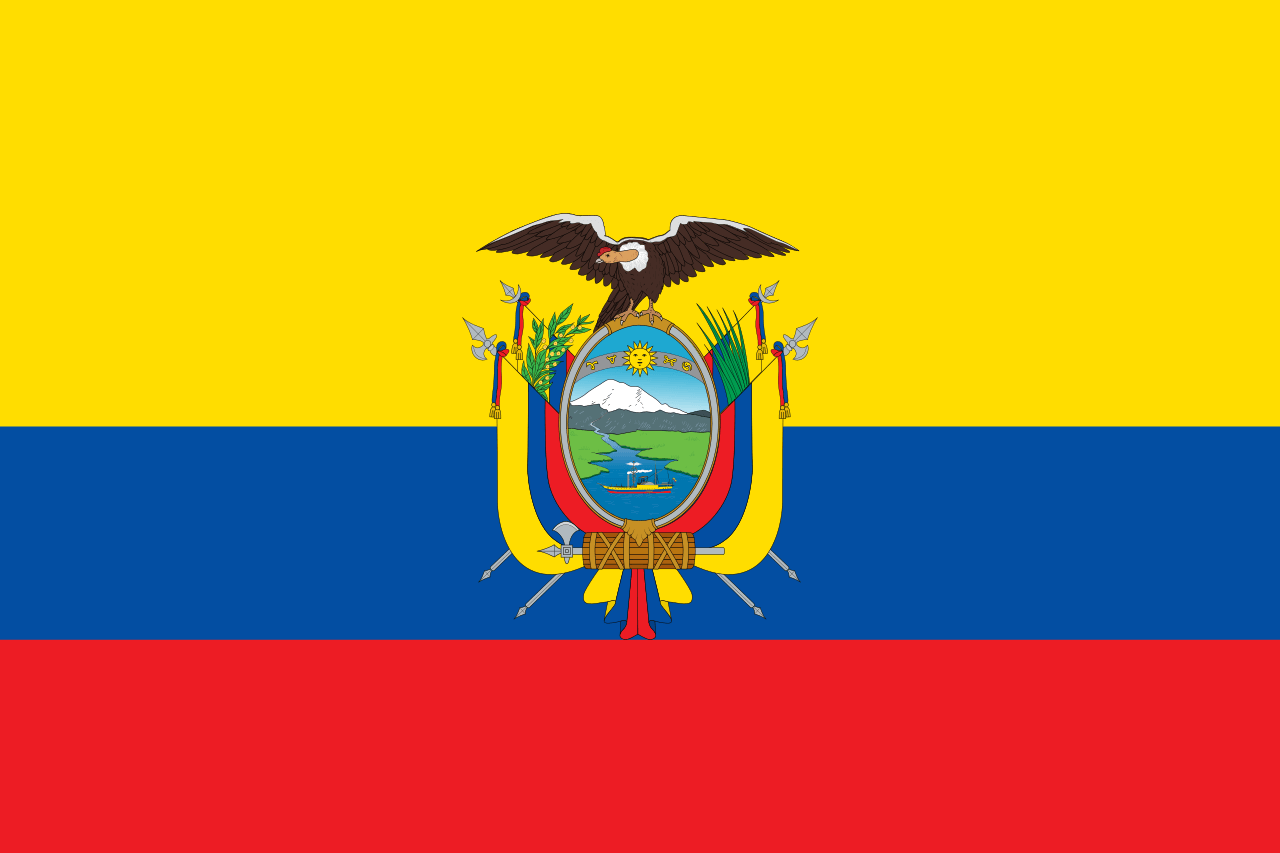
The flag of Ecuador features three horizontal bands of equal width, with the top and bottom bands colored yellow and the middle band colored blue. In the center of the flag is the national coat of arms.
Yellow (gold): The yellow bands represent the country's abundant natural resources and the diversity of its people.
Blue: The blue band represents the country's ocean and the clear skies
Red: The color red symbolizes the blood spilled by the heroes who died in the name of their countrymen's Fatherland and Freedom.
Coat of Arms: The coat of arms in the center of the flag features several important symbols, including:
An Andean condor, which is a national symbol of Ecuador, representing power and strength.
A shield with the image of Guayas and Quil, two legendary heroes from Ecuadorian history, representing bravery and courage.
The sun, representing the country's bright future.
Laurel branches, representing triumph and victory.
The current design of the flag was adopted in 1860, replacing an earlier design that featured a different coat of arms. The current coat of arms was added to the flag in 1900.
The flag of Ecuador represents the country's natural resources, cultural diversity, and struggle for independence and freedom. The yellow and blue colors and the coat of arms with its important symbols all reflect the country's rich cultural and historical heritage.
Yellow (gold): The yellow bands represent the country's abundant natural resources and the diversity of its people.
Blue: The blue band represents the country's ocean and the clear skies
Red: The color red symbolizes the blood spilled by the heroes who died in the name of their countrymen's Fatherland and Freedom.
Coat of Arms: The coat of arms in the center of the flag features several important symbols, including:
An Andean condor, which is a national symbol of Ecuador, representing power and strength.
A shield with the image of Guayas and Quil, two legendary heroes from Ecuadorian history, representing bravery and courage.
The sun, representing the country's bright future.
Laurel branches, representing triumph and victory.
The current design of the flag was adopted in 1860, replacing an earlier design that featured a different coat of arms. The current coat of arms was added to the flag in 1900.
The flag of Ecuador represents the country's natural resources, cultural diversity, and struggle for independence and freedom. The yellow and blue colors and the coat of arms with its important symbols all reflect the country's rich cultural and historical heritage.
8. Flag of Moldova (Blue, Yellow and Red Flag with Emblem)
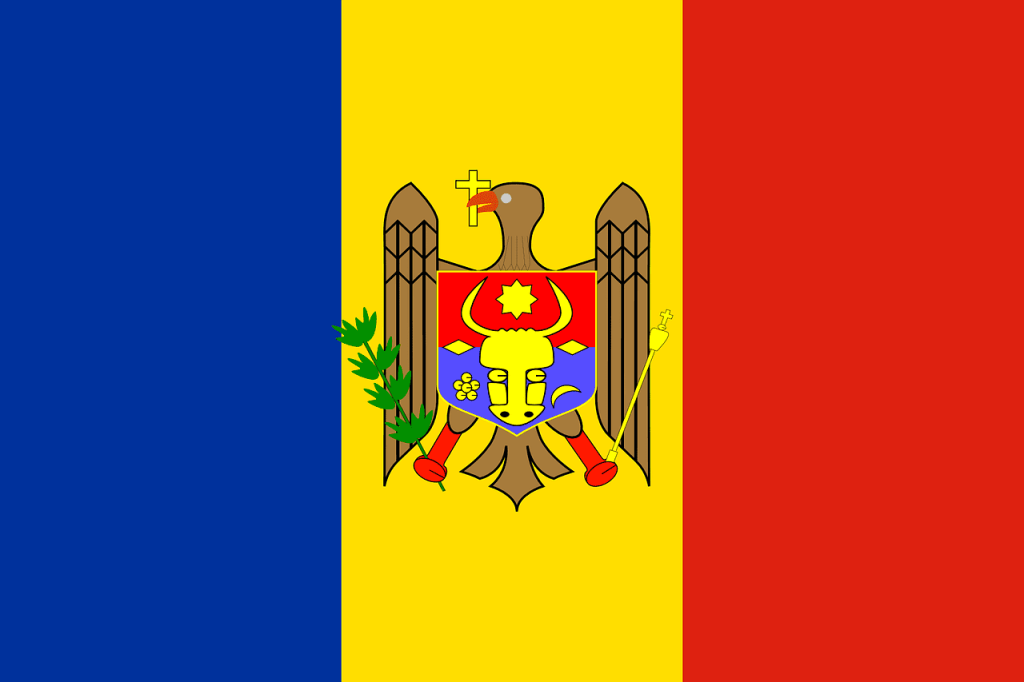
The flag of Moldova consists of three equal vertical stripes: blue, yellow, and red, from left to right. The colors are said to represent various aspects of Moldova's history, culture, and geography, while the shape of the flag itself is a symbol of the country's commitment to democracy and its aspiration for independence and freedom.
Blue: The color blue represents the sky and the Dniester River, which flows through the country. It also symbolizes peace and tranquility.
Yellow : The color Yellow represents the country's rich soil and agricultural traditions. It also symbolizes the hardworking and hospitable nature of the Moldovan people.
Red: The color red represents the valor and courage of the Moldovan people. It also symbolizes the blood shed by Moldovans in defense of their land.
Coat of arms: Located in the center of the flag, the coat of arms features a golden eagle with a cross in its beak and a shield on its chest. The shield displays a stylized aurochs head with a star between its horns, symbolizing the continued existence of Moldovan culture and traditions. The olive branch and the sword held in the eagle's talons represent the country's desire for peace and readiness to defend itself.
The Moldovan flag and its symbols represent the country's history, culture, geography, and aspirations, as well as its commitment to democracy and freedom.
Blue: The color blue represents the sky and the Dniester River, which flows through the country. It also symbolizes peace and tranquility.
Yellow : The color Yellow represents the country's rich soil and agricultural traditions. It also symbolizes the hardworking and hospitable nature of the Moldovan people.
Red: The color red represents the valor and courage of the Moldovan people. It also symbolizes the blood shed by Moldovans in defense of their land.
Coat of arms: Located in the center of the flag, the coat of arms features a golden eagle with a cross in its beak and a shield on its chest. The shield displays a stylized aurochs head with a star between its horns, symbolizing the continued existence of Moldovan culture and traditions. The olive branch and the sword held in the eagle's talons represent the country's desire for peace and readiness to defend itself.
The Moldovan flag and its symbols represent the country's history, culture, geography, and aspirations, as well as its commitment to democracy and freedom.
9. Flag of Mongolia (Yellow, Blue and Red Flag)
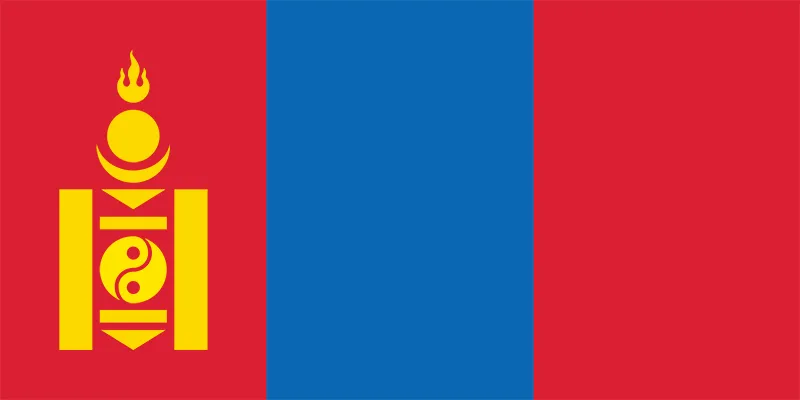
The flag of Mongolia features three vertical stripes of equal width, with the two outer stripes being red and the middle stripe being blue. The national emblem of Mongolia is depicted on the left side of the flag. Here's a breakdown of the significance of the colors and symbols of the Mongolian flag:
Red: The color red represents the valor and bravery of the Mongolian people. It is also a symbol of progress and prosperity.
Blue: The color blue represents represents the sky and the eternal heavens. It is also a symbol of the country's vast open spaces and freedom.
National emblem: The emblem features a yellow Soyombo symbol, a traditional Mongolian symbol that represents the sun, the moon, the earth, and the universe. It is surrounded by two dragons holding a flaming pearl, which symbolizes the country's cultural and historical heritage. Above the emblem is a depiction of the Buddhist symbol of the eternal knot, which represents the country's religious traditions and unity.
The colors and symbols of the Mongolian flag represent the country's history, culture, and aspirations. The red and blue stripes symbolize the strength and freedom of the Mongolian people, while the national emblem represents the country's heritage and unity.
Red: The color red represents the valor and bravery of the Mongolian people. It is also a symbol of progress and prosperity.
Blue: The color blue represents represents the sky and the eternal heavens. It is also a symbol of the country's vast open spaces and freedom.
National emblem: The emblem features a yellow Soyombo symbol, a traditional Mongolian symbol that represents the sun, the moon, the earth, and the universe. It is surrounded by two dragons holding a flaming pearl, which symbolizes the country's cultural and historical heritage. Above the emblem is a depiction of the Buddhist symbol of the eternal knot, which represents the country's religious traditions and unity.
The colors and symbols of the Mongolian flag represent the country's history, culture, and aspirations. The red and blue stripes symbolize the strength and freedom of the Mongolian people, while the national emblem represents the country's heritage and unity.
10. Flag of Andorra (Blue, Yellow and Red Flag with Emblem)
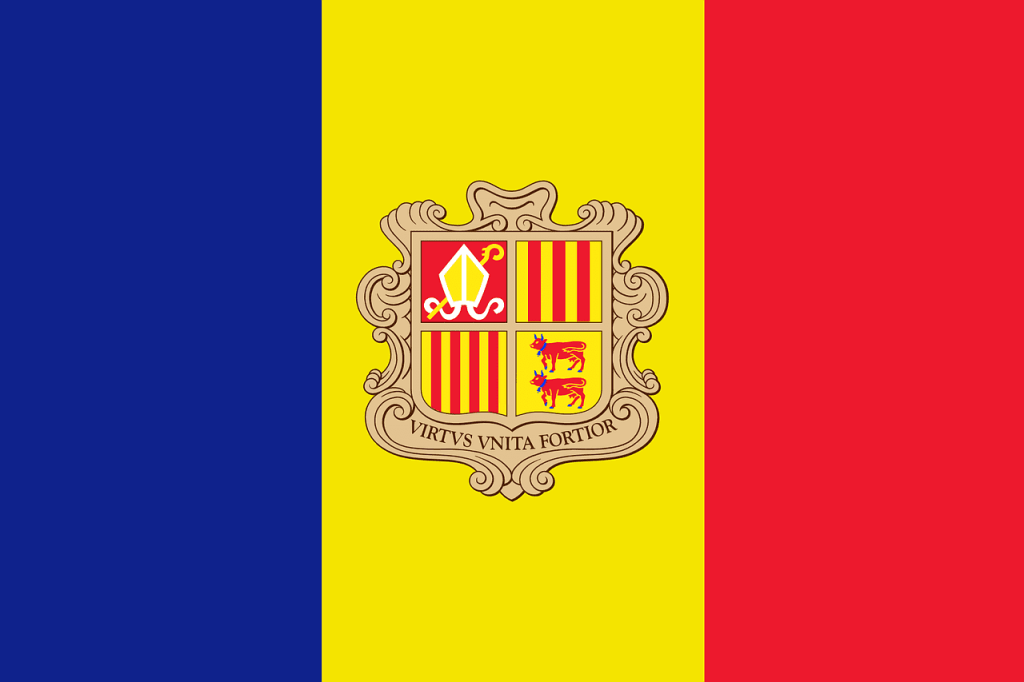
The flag of Andorra consists of three equal vertical stripes of blue, yellow, and red, with the national coat of arms in the center.
Blue: The blue stripe on the flag represents the sky and the country's close ties to the church.
Yellow: The yellow stripe represents the sun and the country's traditions and folklore.
Red: The red stripe represents the country's commitment to democracy, freedom, and the defense of its territories.
Coat of Arms: The coat of arms in the center of the flag features a shield divided into four quarters. The top-left and bottom-right quarters depict the arms of the Bishop of Urgell, who was historically one of the two co-princes of Andorra. The top-right and bottom-left quarters depict the arms of the Count of Foix, who was the other co-prince of Andorra. The motto "Virtus Unita Fortior" (Latin for "United virtue is stronger") appears on a ribbon below the shield.
The flag of Andorra represents the country's strong ties to its history, culture, and traditions, as well as its commitment to democracy, freedom, and the defense of its territories.
Blue: The blue stripe on the flag represents the sky and the country's close ties to the church.
Yellow: The yellow stripe represents the sun and the country's traditions and folklore.
Red: The red stripe represents the country's commitment to democracy, freedom, and the defense of its territories.
Coat of Arms: The coat of arms in the center of the flag features a shield divided into four quarters. The top-left and bottom-right quarters depict the arms of the Bishop of Urgell, who was historically one of the two co-princes of Andorra. The top-right and bottom-left quarters depict the arms of the Count of Foix, who was the other co-prince of Andorra. The motto "Virtus Unita Fortior" (Latin for "United virtue is stronger") appears on a ribbon below the shield.
The flag of Andorra represents the country's strong ties to its history, culture, and traditions, as well as its commitment to democracy, freedom, and the defense of its territories.
World Flags by Color Combination
| BW | BY | GW | ||
| RB | RB | RG | ||
| RW | RY | BBY | ||
| BWB | BWG | BWY | ||
| GBY | GBY | GWO | ||
| RBY | RBY | RGB | ||
| RGY | RWB | RWB | ||
| RWG | WOY | BBWY | ||
| BGBW | BGBY | BGWY | ||
| BGWO | RBWY | RWBB | ||
| RBGW | RBGY | RBWY | ||
| RGBW | RGBY | RGWY | ||
| RGOY | RBGWY | RBWBY | ||
| RBGWBY | ||||
| 0 | A | B | C | D | E |
| F | G | H | I | J | K |
| L | M | N | O | P | Q |
| R | S | T | U | V | W |
| X | Y | Z | # | ||

